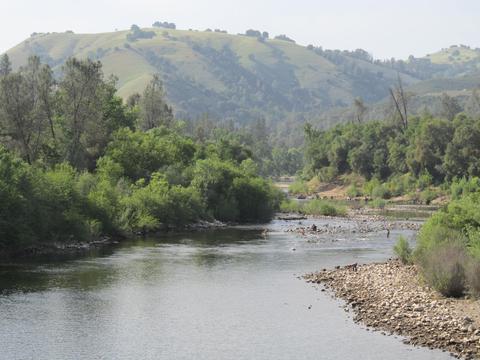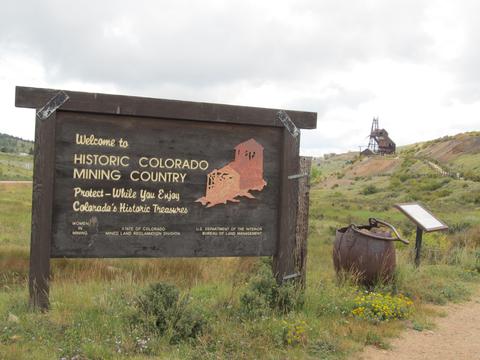The big gold rushes of the 19th century have long since ended, but in most cases you can still prospect for the precious metal in these same historic areas. If you’re interested in giving recreational gold mining a try but not sure where to go, below are some key locations where you can still find the yellow metal by gold panning or metal detecting. Since gold was found in these areas, likely the old-timers didn’t get it all— so you may get lucky and strike it rich (or at least catch gold fever)! Rules and regulations differ from state to state, so always be aware of the local laws. And if you want to metal detect on private land, you’ll need permission from the landowner.
same historic areas. If you’re interested in giving recreational gold mining a try but not sure where to go, below are some key locations where you can still find the yellow metal by gold panning or metal detecting. Since gold was found in these areas, likely the old-timers didn’t get it all— so you may get lucky and strike it rich (or at least catch gold fever)! Rules and regulations differ from state to state, so always be aware of the local laws. And if you want to metal detect on private land, you’ll need permission from the landowner.
Below is a very short list that offers a few ideas only. Beginners should search the internet or join a local gold prospecting organization for more information.
Crow Creek, Alaska. If you are heading to the 49th state and want to look for more than just incredible scenery and wildlife, you might want to try your hand at panning for gold in Crow Creek. The first claims of gold are said to have been made in 1897 near the mouth of the stream. The discovery of gold near the Chena River in Fairbanks set off the Fairbanks Gold Rush of the early 1900s and gold is still found in relatively impressive quantities in Alaska's ice-cold waterways. Recreational panning is also allowed at the narrower Pedro Creek to the north of Fairbanks. If a trip is not in your immediate plans, you can still have gold-rich paydirt sent directly to your home where you can pan in a tub in your kitchen sink!
American River, California. The California Gold Rush began in 1848 when gold was discovered at Sutter's Mill on the banks of the American River in Coloma. The surrounding area is still rich in gold deposits, and recreational panning is permitted these days at the south fork of the river in Coloma and at two forks in the Auburn State Recreational Area. The Cosumnes River that flows through California's Eldorado National Forest is also known for its golden deposits, and several campgrounds are nearby. There are many places to hunt for gold in California. Just read up on its rich gold mining history for more ideas on where to go.
 Clear Creek, Colorado. A gold-hunter's paradise, this river in Colorado is hands-down the best place in the state for recreational prospecting. Panning and sluicing for gold is permitted on the river bed at Arapahoe Bar in west Denver, and digging is allowed on the north side of the river there. There's also a large stretch of river about 10 miles upstream from Arapahoe Bar at Clear Creek Canyon where gold panning and sluicing are permitted. You may even have better luck here since the location is up-river.
Clear Creek, Colorado. A gold-hunter's paradise, this river in Colorado is hands-down the best place in the state for recreational prospecting. Panning and sluicing for gold is permitted on the river bed at Arapahoe Bar in west Denver, and digging is allowed on the north side of the river there. There's also a large stretch of river about 10 miles upstream from Arapahoe Bar at Clear Creek Canyon where gold panning and sluicing are permitted. You may even have better luck here since the location is up-river.
Snake River, Idaho. Gold has been found throughout most of the 800-mile length of the Snake River from the headwaters near Yellowstone National Park to Lewiston, Idaho. In 1860 the Idaho Gold Rush began. It started with a gold discovery in Pierce, particularly at the juncture where Orofino Creek meets Canal Creek. The most popular gold- producing district in Idaho is Boise Basin County, which was discovered only two years after the Pierce event took place. It has also been reported that gold was discovered in Pend d'Oreille River in 1852.
Rye Patch, Nevada. Northern Nevada is home to the state's best known placer field for nugget shooting with a metal detector— the Majuba or Rye Patch placer district. The area is located west of the Rye Patch Reservoir, about 45 miles north of Lovelock. Despite intensive prospecting in this region beginning in the 1860's, this placer field was not discovered until 1938 by a local man who worked the area by drywashing for several years through the early 1940's, producing over 600 ounces of placer gold. Sporadic prospecting work has continued ever since.
Little Meadow Creek, North Carolina. Little Meadow Creek at Reed Gold Mine, is the site of the first discovery of gold in the United States. In 1799, Conrad Reed was walking along Little Meadow Creek when he noticed a shiny, gold substance in the water. It turned out to be a 17 pound gold nugget! Since then, deposits were mined in both the Piedmont and Mountain regions, most of the early production was in the central Piedmont, particularly in the Carolina slate belt and in Mecklenburg County.
Black Hills Forest, South Dakota. In 1876 the gold rush swept across the Black Hills of South Dakota after gold deposits were found in Deadwood Creek, and folks have been panning for gold ever since. Strawberry and Elk creeks all have placer gold, as well as Yellow, Squaw and Annie creeks. Generally, most of the National Forests are open to recreational mineral and rock collecting, gold panning and prospecting using a metal detector. But always check local regulations because some wilderness areas are closed to treasure hunting of any kind.
Keep in mind that even if there has been no major “rush,” major amounts of gold have been found in many other states, too, including Georgia, Michigan, Montana, New Mexico, Oregon, South Carolina, Tennessee, Texas, Utah, Virginia, Washington, Wisconsin, and Wyoming. Good luck!
More articles on gold mining history found here.





